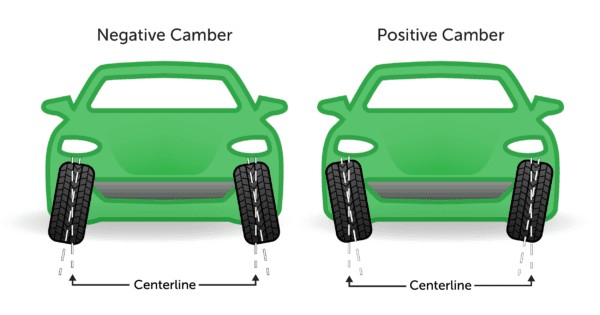If you’re a car owner, you’ve likely heard about the importance of both wheel alignment and wheel balancing. While both contribute to extending tire life and improving steering and handling performance, they address different issues. This article focuses specifically on the cost associated with tire rebalancing and provides a detailed overview of the process.
What is Wheel Balancing?
Wheel balancing is the process of adjusting the weight distribution of a tire and wheel assembly. When a tire is unbalanced, it causes vibrations and an uneven ride. This uneven distribution of weight and pressure leads to excessive tire wear, potentially forcing you to replace your tires sooner than necessary.
To balance your tires, a technician will remove the wheels from your vehicle and mount them on a specialized balancing machine. This machine spins the tire at high speeds to identify any weight imbalances. The technician then attaches small weights to the wheel to compensate for these imbalances, resulting in a smoother and more balanced ride.
What Causes Unbalanced Tires?
Several factors can contribute to tires becoming unbalanced:
- Normal Tire Wear and Imperfections: Over time, tires naturally wear down, and imperfections in the manufacturing process can lead to imbalances.
- Worn-Out Suspension Parts: A worn suspension can cause uneven wear on your tires, contributing to balance issues.
- Sudden Impacts: Hitting potholes, curbs, or being involved in minor accidents can all disrupt the balance of your tires.
What are the Symptoms of Unbalanced Tires?
Recognizing the symptoms of unbalanced tires is crucial for timely maintenance. Here are some common signs:
- Vibrations: You experience vibrations that increase as your vehicle’s speed increases. These vibrations might be felt primarily in the steering wheel (indicating a front wheel issue) or in the seat (suggesting a rear wheel problem).
- Irregular Tread Wear: You notice an irregular tread wear pattern on your tires, often appearing as scalloped or cupped patterns.
How Much Does It Cost to Rebalance Tires?
The cost to rebalance tires can vary depending on several factors, including the type of balancing service and the repair shop you choose. Generally, you can expect to pay anywhere from $15 to $50 per tire.
Some auto shops offer different levels of tire balancing services:
- Standard Balancing: This is the most common type of tire balancing and addresses up-and-down imbalances.
- Road Force Balancing: This utilizes specialized equipment to identify and correct more complex balancing issues that standard balancing cannot resolve.
Road force balancing provides a more comprehensive solution to vibration problems.
Factors Affecting the Cost of Tire Rebalancing
Several factors can affect the price you pay for tire rebalancing:
- Type of Balancing Service: As mentioned earlier, road force balancing is typically more expensive than standard balancing due to the specialized equipment involved.
- Shop Labor Rates: Labor rates vary from shop to shop, influencing the overall cost of the service.
- Location: Prices can fluctuate depending on your geographic location.
How Often Should You Rebalance Your Tires?
There’s no definitive answer to how often you should rebalance your tires. Many factors come into play, including your driving habits, the road conditions you typically encounter, and the quality of your tires.
A general recommendation is to have your wheels balanced every 12,000 to 15,000 miles or during every other tire rotation. You should also consider rebalancing your tires any time you purchase new tires or if you experience any of the symptoms mentioned above.
Wheel Alignment vs. Wheel Balancing: Understanding the Difference
It’s essential to understand the difference between wheel alignment and wheel balancing.
- Wheel Alignment: This involves adjusting the angles of your vehicle’s suspension to ensure the wheels are positioned correctly relative to the road. Proper alignment helps prevent uneven tire wear and ensures optimal handling.
- Wheel Balancing: As discussed earlier, this corrects weight imbalances in the tire and wheel assembly to prevent vibrations and uneven wear.
The Importance of Regular Tire Maintenance
Regular tire maintenance, including balancing and alignment, is crucial for:
- Extending Tire Life: Proper maintenance helps prevent uneven wear, maximizing the lifespan of your tires.
- Improving Fuel Efficiency: Balanced and aligned tires reduce rolling resistance, leading to better fuel economy.
- Enhancing Safety: Well-maintained tires provide better traction and handling, improving your vehicle’s safety.
- Ensuring a Smooth and Comfortable Ride: Addressing balance and alignment issues eliminates vibrations and ensures a smoother, more comfortable driving experience.
Conclusion
Understanding the cost associated with rebalancing tires, the symptoms of unbalanced tires, and the importance of regular tire maintenance is crucial for any car owner. By staying proactive with tire care, you can extend the life of your tires, improve your vehicle’s performance, and ensure a safer and more comfortable driving experience. Remember to consult your vehicle’s owner’s manual for specific recommendations and schedule regular maintenance checks with a trusted mechanic.
